The EVGA X299 FTW K Motherboard Review: Dual U.2 Ports
by Joe Shields on January 29, 2018 8:45 AM EST- Posted in
- Motherboards
- Intel
- Killer
- EVGA
- X299
- Basin Falls
- Skylake-X
- Kaby Lake-X
BIOS
The EVGA BIOS screens have a black background sea blue accents and white writing which is a good set of contrasting colors and allows for an easy read of the information.
The top portion is essentially a summary of what is currently going on in the system while the bottom part is business end where adjustments can be made. The left top portion shows which DRAM slots are populated and both their individual capacity as well as the total capacity of the system and current speed. Below those values, the CPU and Memory voltage is displayed. The middle portion shows the current state of the CPU in regards to clockspeed and the number of active cores. The right side shows a summary of the PCIe lanes and their current bandwidth state while below that are the temperatures of the VRM and CPU. For reference, we are using the latest BIOS available at the EVGA website, version 1.06.
The magic happens in the bottom 2/3 of the BIOS screen where across the top of that we see five sections; Overclock, Memory, Advanced, Boot, and Save & Exit. The EVGA BIOS, as we will see in this section, is fairly simple and straightforward. The first thing one may notice compared to other X299 boards is the lack of an 'EZ Mode' screen; users will jump right into the Overclock tab in this case.
The Overclock section presents users with many options associated with overclocking and getting the system beyond its normal specifications. Things like CPU Multiplier Control, BCLK Frequency settings, and several voltage domains are found in here. It really has much of what one needs to overclock the CPU right on this screen. What is missing is LLC adjustments as well as any pre-configured multi-core enhancement. Neither are a big deal in the overall scheme of things, but they are certainly not there. Also notably missing is any sort of power limit adjustments. In many boards, there are power limits in place to keep the process functioning within its parameters and this can limit overclocking capabilities. A simple adjustment to those parameters and users are on their way. On the FTW K, there doesn't seem to be an option to adjust the limits that I have run into yet. These are curious omissions, however, the board doesn't seem to blink an eye without them in our testing.
The other curious implementation on this motherboard is when switching to manual mode (Per Core or RatioLimit), it automatically sets up a negative AVX and AVX2 offset of 3. Typically, this is something users change themselves if needed. If not changed, this will result in slightly slower performance on AVX based tasks.
The Memory tab is where all the memory options reside. Here is where the user will set XMP profiles, or manually set memory speed and timings. I do like how they added the XMP profiles to the memory information as some DRAM sets do come with two XMP profiles so it easier to see which one you want and select it. The supported memory speeds on the FTW K are the lowest we have seen on an X299 board so far at DDR4-3200. It does have memory multiplier settings up to 4400, but I was only able to test to DDR4-3600 with the set of DRAM used. Both sets of sticks worked just fine using the XMP profile at DDR4-2666 and DDR4-3200.
The Advanced screen is where adjustments to the CPU (EIST/C-States/Turbo/etc), CPU Storage (CPU attached storage such as PCIe, one M.2 slot, and the U.2 slots), PCIe (bandwidth adjustments), PCH, SATA (enable/disable), and USB configurations can be edited. The Power Management section feels like a tease and has adjustments for enabling/disabling LEDs, ERP mode for EU standard energy efficiency, and sleep states. Again, no power limits or LLC found. The Onboard Device configuration section is where users can enable/disable the LAN, Audio, USB 3.1 Controller, as well as U.2 and M.2 sockets.
The H/W monitor configuration section is where users will find system temperatures such as the powe delivery, motherboard, and the CPU temperature. It also displays voltages from the power supply like the +12V, +5V, and 3VSB. This is also where the user can adjust fan speeds. There are options such as SMART and Max as well as percent values for fine control, although there isn't a manual graph that can be adjusted with curve points. The two CPU fan headers are PWM only while the five chassis/system fans are able to do both PWM and DC control. We do not have the ability to create custom curves.
The Boot section is where any boot-related functionality can be adjusted.
Last is the Save & Exit tab where we are able to restore defaults or load the last saved settings. Also in this section is where users are able to save BIOS profiles internally or to a USB stick as well as updating the BIOS.
Overall the EVGA FTW K BIOS worked fine. There were really only a couple of complaints. First was the missing overclock options: while not a huge deal, it didn't stop me from reaching our temperature limited overclock of 4.5 GHz, but they are still options found on nearly every board. The other issue I had was with the system not loading from a cold boot. It would start to POST, beep a couple of times, then give 5 long beeps and hang or occasionally it would even boot after the five long beeps. This happened with both the 1.01 BIOS it shipped with as well as the 1.06 BIOS we used from the website.
Software
The DVD contains all the drivers needs to get up and going, as well as the E-Leet utility. Installing the motherboard drivers worked without issue. One thing not found in EVGA's software suite that others have is an automatic update program. Users will have to periodically check for updates to the system.
The EVGA E-Leet Tuning Utility X is a windows based utility for Monitoring and Overclocking. In recent iterations, it also can now be used to change the onboard LED effects. The first three screens, CPU, Mainboard, and Memory should all be familiar as they are more or less a CPU-Z twin displaying information for each part.
The LED section (in the gallery) was a bit lackluster allowing a total of four adjustments; Static On, Static OFF, Breathing, and Rainbow. I would like to see more options than that if only to keep up with the other board partners which tend to have several more preset LED functions.
The overclocking and voltage sections allow for adjusting major voltages, CPU multiplier, RING, and BCLK within Windows. Depending on how the user has it set in the BIOS, this determines which cores are able to be adjusted from the Intel spec to a per core ratio where all are adjustable, to Ratio Limit where one slider controls all.
The E-LEET utility worked flawlessly until I set the RAM speed manually at DDR4-3600. Once that happened, I was unable to apply voltage without the system freezing requiring a hard reboot. The system was plenty stable if I set the voltage and speed through the BIOS but would just hard freeze if I tried while using a manual multiplier.
The EVGA FTW K comes with two NICs: the Intel I219-V and the Killer E2500. The Killer NIC comes with its own software for monitoring traffic as well as the ability to prioritize traffic in applications. This is an updated software stack from previous generations of motherboards that used older controllers, designed to be more user friendly and allow the user to combine downloads with gameplay and streaming by having traffic configured by priority with a whitelist autodetect feature.




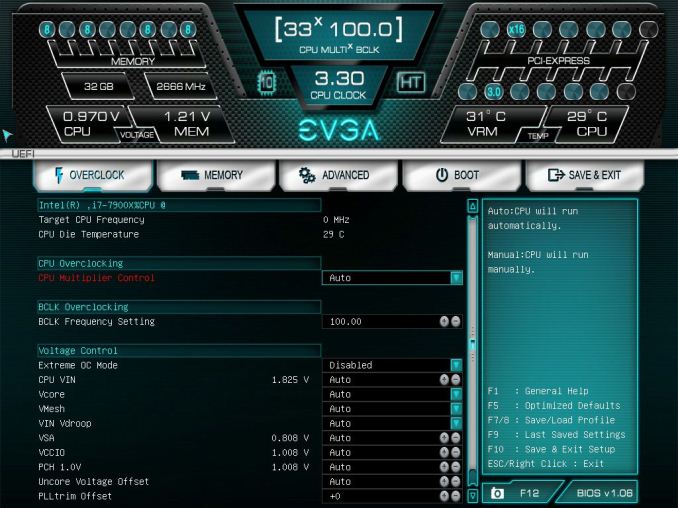
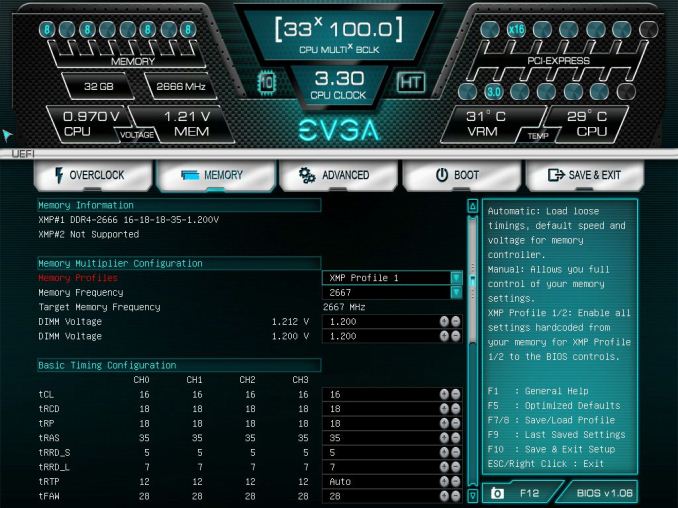
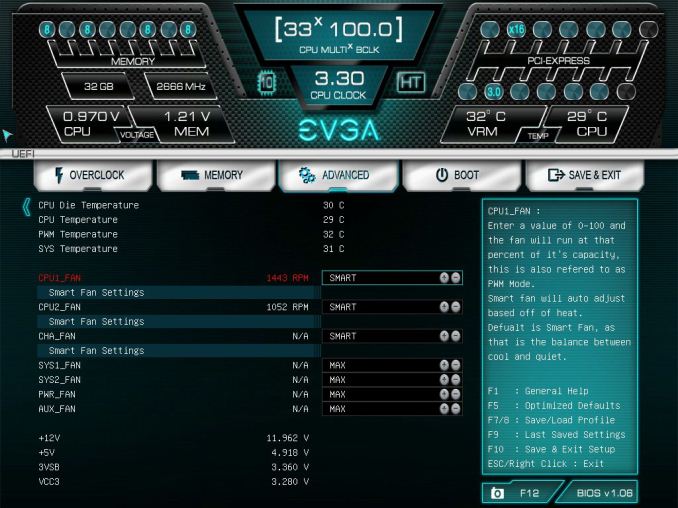
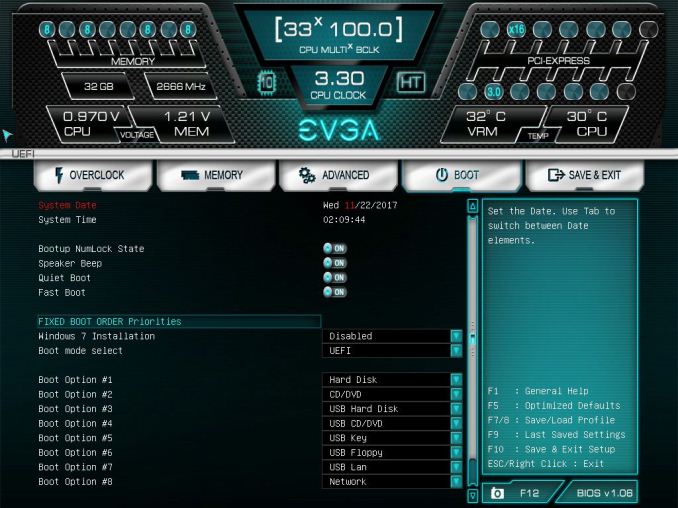







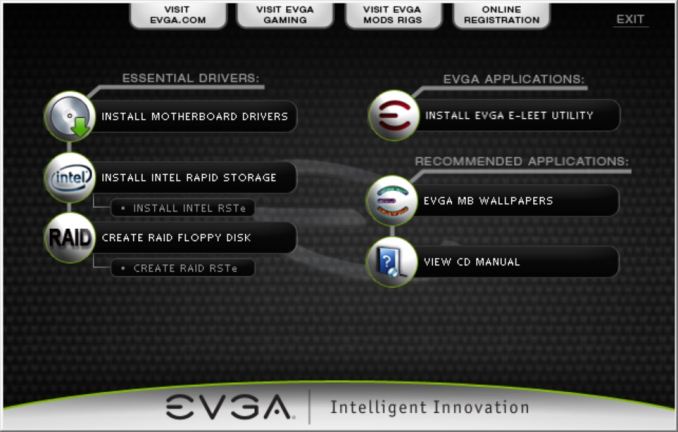
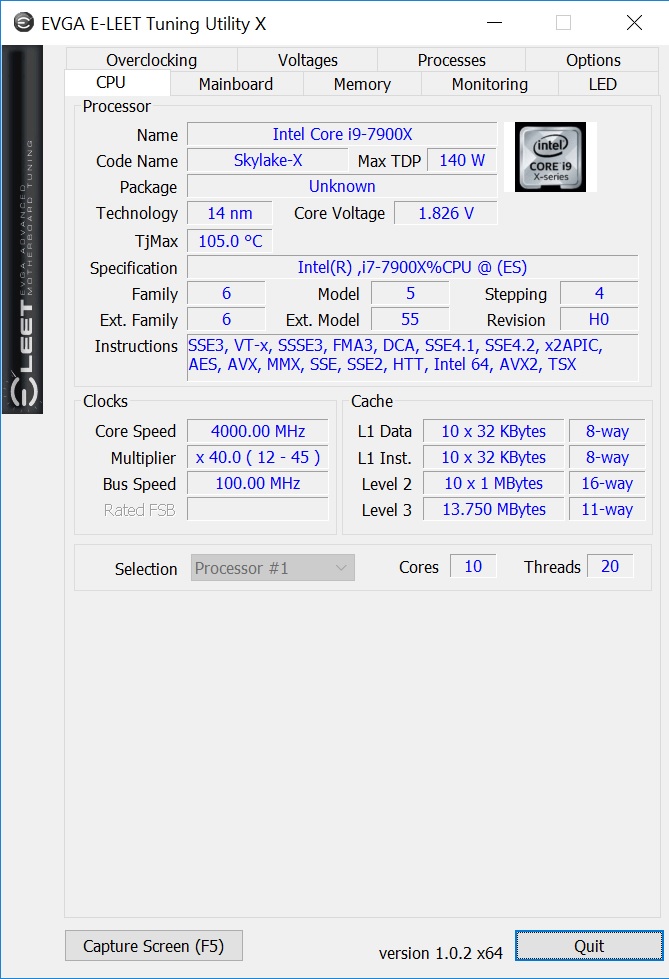
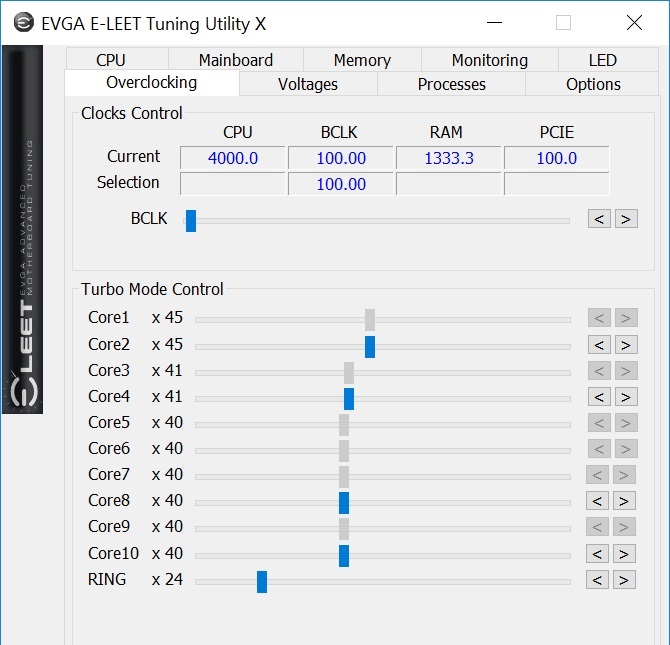
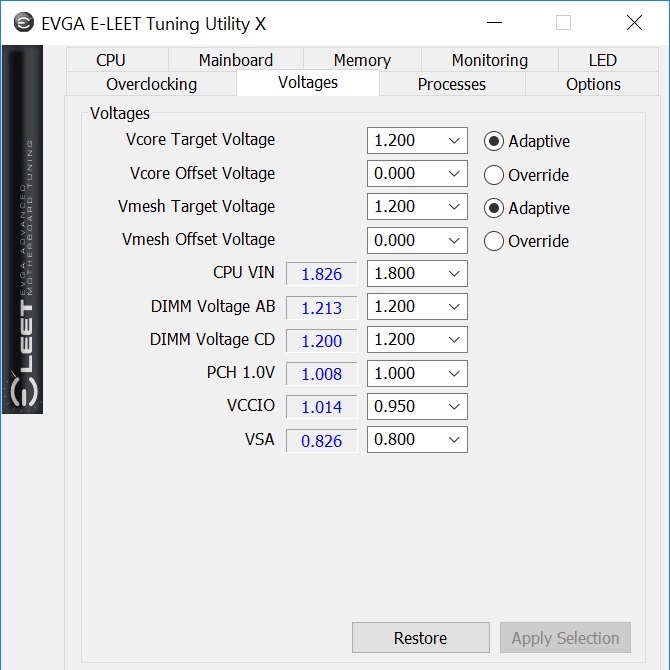















23 Comments
View All Comments
jordanclock - Monday, January 29, 2018 - link
Any chance we could see comparison numbers on the Intel and Killer NICs?Flunk - Monday, January 29, 2018 - link
There is almost no difference, type "intel vs killer nic" into Google. It's been done to death.jordanclock - Monday, January 29, 2018 - link
By that logic, they shouldn't bother including half their benchmarks for motherboards because they are almost always to same for a given chipset.My interest is in this particular motherboards implementation of the dual NICs.
Ian Cutress - Monday, January 29, 2018 - link
Aside from doing a peak throughput test, we're looking into doing something more substantial for NIC testing. Still a WIPjordanclock - Monday, January 29, 2018 - link
Awesome! Glad you're looking to do something more meaningful than peak throughput. It's kind of like the average FPS of networking, in that it gets a lot of attention but isn't the most useful number.ImSpartacus - Monday, January 29, 2018 - link
Whew, I'm glad there's finally a mobo with two u.2 ports.It's so annoying to have all of these u.2 drives without the ability to use more than one at a time!
bug77 - Monday, January 29, 2018 - link
Ha, I was just thinking the same thing when I read the article :PYuriman - Monday, January 29, 2018 - link
Maybe it's just me, but I find those heatsinks pretty ugly.JoeyJoJo123 - Monday, January 29, 2018 - link
It's supposed to align with their For The Win 3 (FTW3) series video cards styling.http://hexus.net/media/uploaded/2017/5/9656d308-25...
It's no different than MSI doing a similar red/black dragon scheme that they've done with their video cards to their motherboards.
bug77 - Monday, January 29, 2018 - link
I find this type of comment pretty useless.No one design choice will ever appeal to everyone. And a chameleonic or customizable look hasn't been done yet, so that comment really brings nothing to the discussion.
It's ok to point out fugly board, so the manufacturer knows not to do that again, but that's far from the case here.